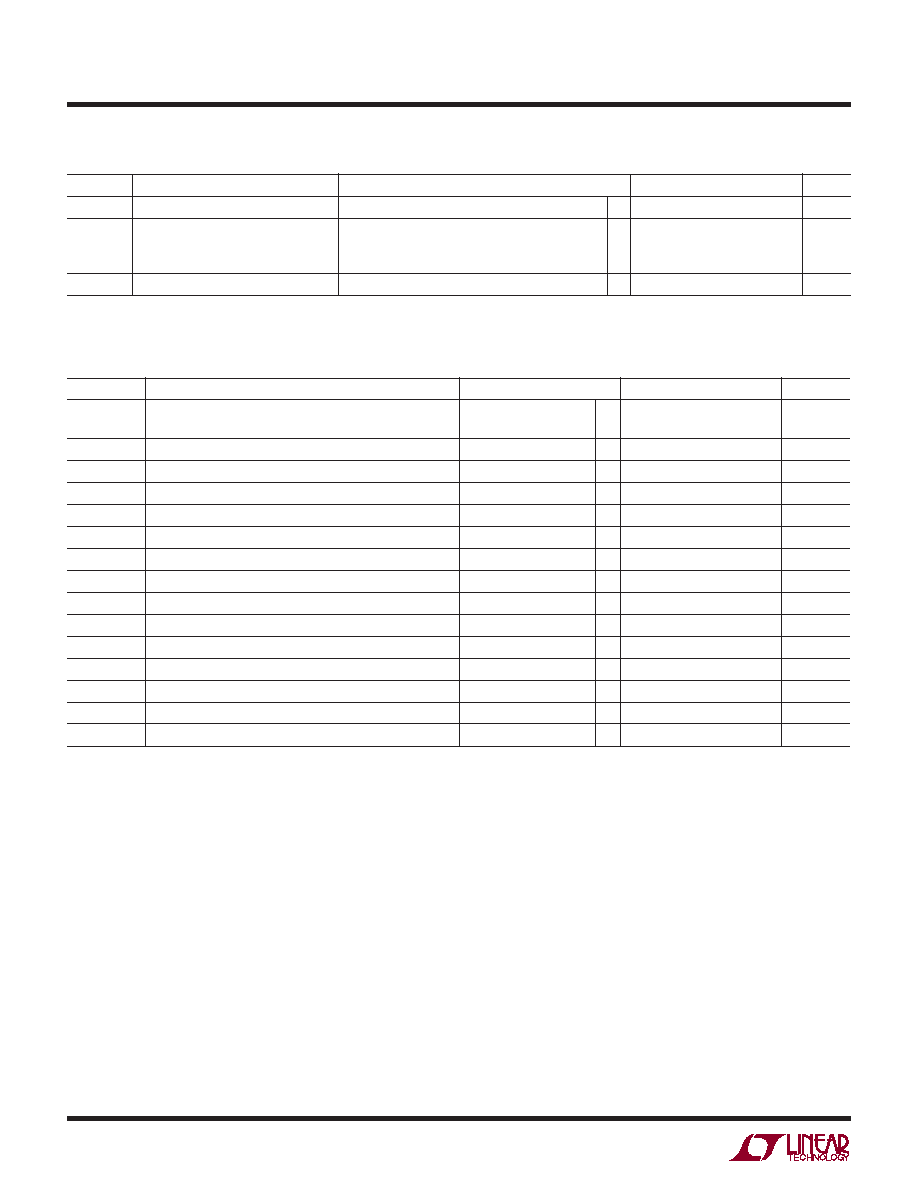- 您現(xiàn)在的位置:買賣IC網(wǎng) > PDF目錄17028 > DC887A (Linear Technology)BOARD SAR ADC LTC1408 PDF資料下載
參數(shù)資料
| 型號: | DC887A |
| 廠商: | Linear Technology |
| 文件頁數(shù): | 15/20頁 |
| 文件大小: | 0K |
| 描述: | BOARD SAR ADC LTC1408 |
| 軟件下載: | QuikEval II System |
| 設(shè)計(jì)資源: | DC887A Design File DC887A Schematic |
| 標(biāo)準(zhǔn)包裝: | 1 |
| 系列: | QuikEval-II™ |
| ADC 的數(shù)量: | 1 |
| 位數(shù): | 12 |
| 采樣率(每秒): | 600k |
| 數(shù)據(jù)接口: | 串行 |
| 輸入范圍: | ±1.25 V |
| 工作溫度: | 0°C ~ 70°C |
| 已用 IC / 零件: | LTC1408 |
| 已供物品: | 板 |
| 相關(guān)產(chǎn)品: | LTC1408CUH-ND - IC ADC 14BIT 600KSPS 32-QFN LTC1408CUH-12#TRPBF-ND - IC ADC 12BIT 600KSPS 32-QFN LTC1408IUH-12#TRPBF-ND - IC ADC 12BIT 600KSPS 32-QFN LTC1408IUH#TRPBF-ND - IC ADC 14BIT 600KSPS 32-QFN LTC1408CUH#TRPBF-ND - IC ADC 14BIT 600KSPS 32-QFN LTC1408IUH-12#PBF-ND - IC ADC 12BIT 600KSPS 32-QFN LTC1408CUH-12#PBF-ND - IC ADC 12BIT 600KSPS 32-QFN LTC1408IUH#PBF-ND - IC ADC 14BIT 600KSPS 32-QFN LTC1408CUH#PBF-ND - IC ADC 14BIT 600KSPS 32-QFN |

4
LTC1408
1408fa
SYMBOL
PARAMETER
CONDITIONS
MIN
TYP
MAX
UNITS
fSAMPLE(MAX)
Maximum Sampling Frequency per Channel
●
100
kHz
(Conversion Rate)
tTHROUGHPUT
Minimum Sampling Period (Conversion + Acquisiton Period)
●
667
ns
tSCK
Clock Period
(Note 16)
●
100
10000
ns
tCONV
Conversion Time
(Notes 6, 17)
96
SCLK cycles
t1
Minimum Positive or Negative SCLK Pulse Width
(Note 6)
2
ns
t2
CONV to SCK Setup Time
(Notes 6, 10)
3
10000
ns
t3
SCK Before CONV
(Note 6)
0
ns
t4
Minimum Positive or Negative CONV Pulse Width
(Note 6)
4
ns
t5
SCK to Sample Mode
(Note 6)
4
ns
t6
CONV to Hold Mode
(Notes 6, 11)
1.2
ns
t7
96th SCK
↑ to CONV↑ Interval (Affects Acquisition Period)
(Notes 6, 7, 13)
45
ns
t8
Minimum Delay from SCK to Valid Bits 0 Through 11
(Notes 6, 12)
8
ns
t9
SCK to Hi-Z at SDO
(Notes 6, 12)
6
ns
t10
Previous SDO Bit Remains Valid After SCK
(Notes 6, 12)
2
ns
t11
VREF Settling Time After Sleep-to-Wake Transition
(Notes 6, 14)
2
ms
The
● denotes the specifications which apply over the full operating temperature
range, otherwise specifications are at TA = 25°C. With internal reference, VDD = VCC= 3V.
SYMBOL
PARAMETER
CONDITIONS
MIN
TYP
MAX
UNITS
VDD, VCC
Supply Voltage
2.7
3.6
V
IDD + ICC
Supply Current
Active Mode, fSAMPLE = 600ksps
●
57
mA
Nap Mode
●
1.1
1.9
mA
Sleep Mode
2.0
15
A
PD
Power Dissipation
Active Mode with SCK, fSAMPLE = 600ksps
15
mW
POWER REQUIRE E TS
W
U
The
● denotes the specifications which apply over the full operating temperature
range, otherwise specifications are at TA = 25°C. VDD = 3V.
TI I G CHARACTERISTICS
U
W
Note 1: Stresses beyond those listed under Absolute Maximum Ratings
may cause permanent damage to the device. Exposure to any Absolute
Maximum Rating condition for extended periods may affect device
reliabilty and lifetime.
Note 2: All voltage values are with respect to ground GND.
Note 3: When these pins are taken below GND or above VDD, they will be
clamped by internal diodes. This product can handle input currents greater
than 100mA below GND or greater than VDD without latchup.
Note 4: Offset and range specifications apply for a single-ended CH0+ –
CH5+ input with CH0– – CH5– grounded and using the internal 2.5V
reference.
Note 5: Integral linearity is tested with an external 2.55V reference and is
defined as the deviation of a code from the straight line passing through
the actual endpoints of a transfer curve. The deviation is measured from
the center of quantization band. Linearity is tested for CH0 only.
Note 6: Guaranteed by design, not subject to test.
Note 7: Recommended operating conditions.
Note 8: The analog input range is defined for the voltage difference
between CHx+ and CHx–, x = 0–5.
Note 9: The absolute voltage at CHx+ and CHx– must be within this range.
Note 10: If less than 3ns is allowed, the output data will appear one clock
cycle later. It is best for CONV to rise half a clock before SCK, when
running the clock at rated speed.
Note 11: Not the same as aperture delay. Aperture delay (1ns) is the
difference between the 2.2ns delay through the sample-and-hold and the
1.2ns CONV to Hold mode delay.
Note 12: The rising edge of SCK is guaranteed to catch the data coming
out into a storage latch.
Note 13: The time period for acquiring the input signal is started by the
96th rising clock and it is ended by the rising edge of CONV.
Note 14: The internal reference settles in 2ms after it wakes up from Sleep
mode with one or more cycles at SCK and a 10
F capacitive load.
Note 15: The full power bandwidth is the frequency where the output code
swing drops by 3dB with a 2.5VP-P input sine wave.
Note 16: Maximum clock period guarantees analog performance during
conversion. Output data can be read with an arbitrarily long clock period.
Note 17: The conversion process takes 16 clocks for each channel that is
enabled, up to 96 clocks for all 6 channels.
相關(guān)PDF資料 |
PDF描述 |
|---|---|
| 380LX682M035J022 | CAP ALUM 6800UF 35V 20% SNAP |
| DK-DEV-3CLS200N | KIT DEV CYCLONE III LS EP3CLS200 |
| FPF2000 | IC SW LOAD FULL FUNC 50MA SC70-5 |
| DC1813A-A | BOARD SAR ADC LTC2370-16 |
| EEM25DRYF | CONN EDGECARD 50POS DIP .156 SLD |
相關(guān)代理商/技術(shù)參數(shù) |
參數(shù)描述 |
|---|---|
| DC88B-12DCCW/2 | 制造商:Curtis Instruments 功能描述: |
| DC88B-24DC-332 | 制造商:Curtis Instruments 功能描述: |
| DC88B-48DC-528 | 制造商:Curtis Instruments 功能描述: |
| DC88B-528 | 制造商:Curtis Instruments 功能描述: |
| DC88BYDAR | 制造商:Texas Instruments 功能描述: |
發(fā)布緊急采購,3分鐘左右您將得到回復(fù)。